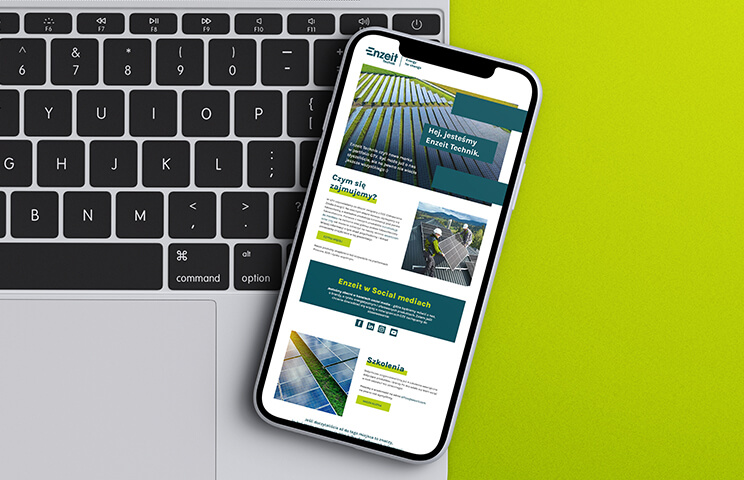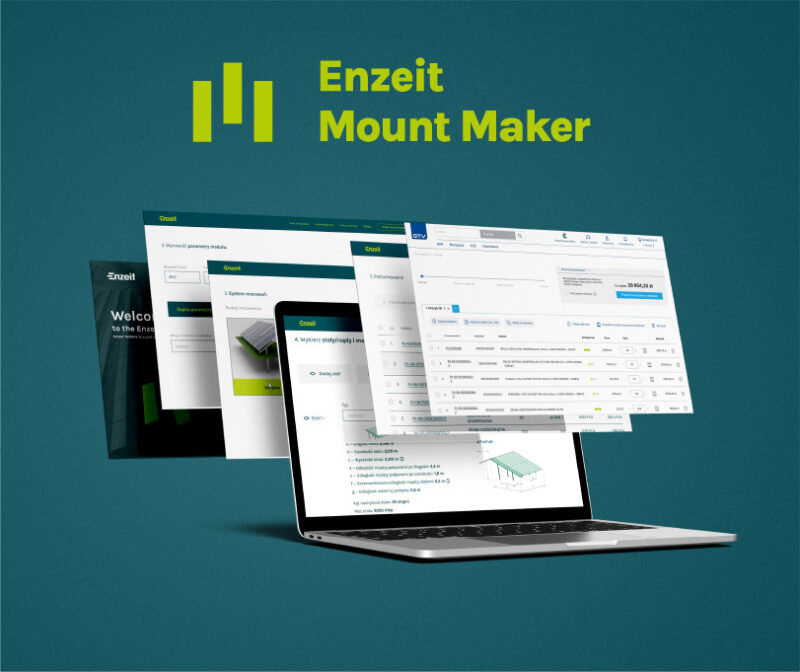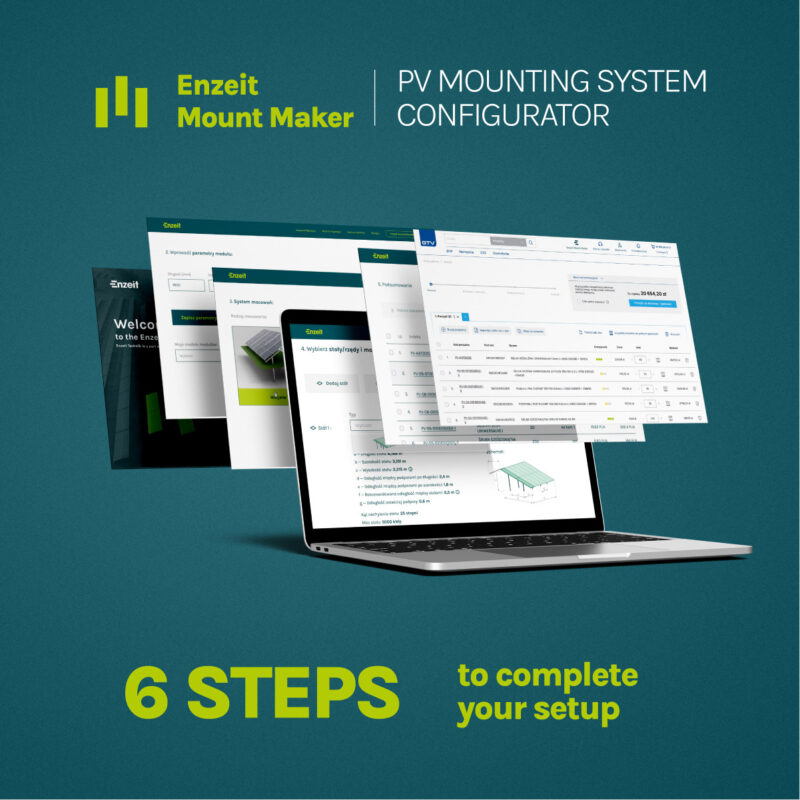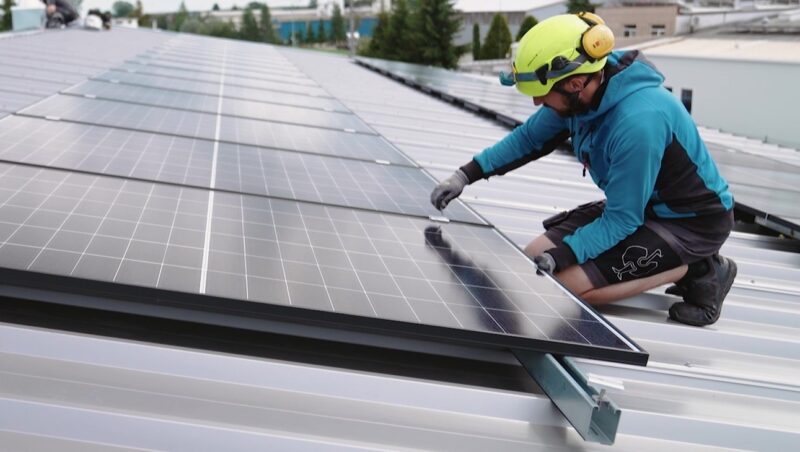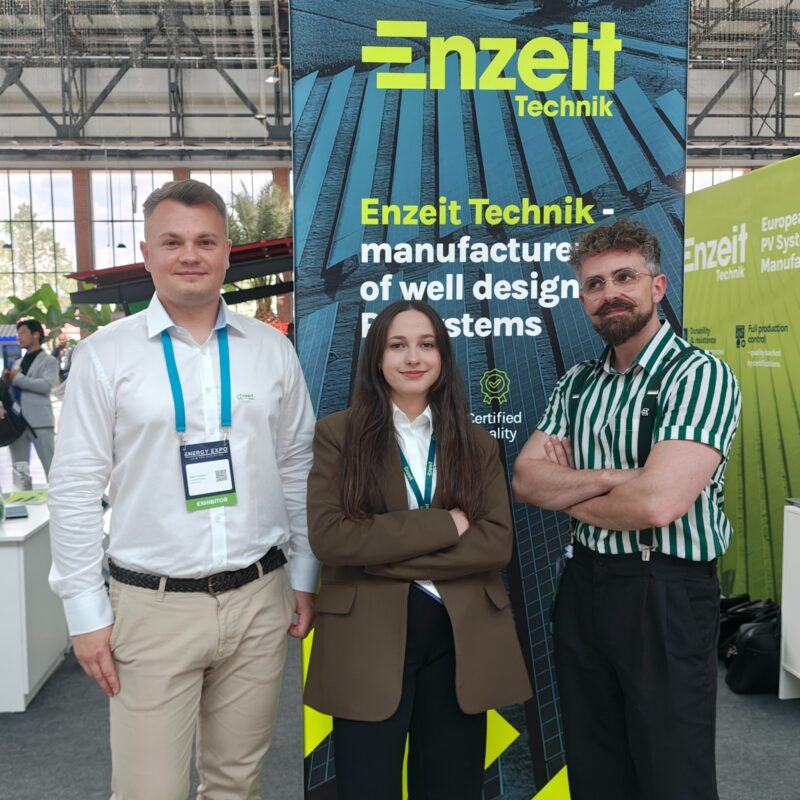Installing photovoltaic (PV) panels on sloped roofs is one of the most popular solutions, allowing effective use of roof space while maximizing system performance. A crucial aspect is selecting the right support structure that ensures installation stability, the correct tilt angle of the modules, and long-term durability. This article discusses the characteristics of photovoltaic structures designed for sloped roofs, outlines the key selection criteria, and analyzes the benefits of using this solution.
Characteristics of PV Structures for Sloped Roofs
A photovoltaic structure for a sloped roof is a framework that enables the stable installation of PV panels on inclined surfaces. These systems are designed to adapt to different roof angles and roofing materials such as ceramic tiles, metal roofing, or bitumen membranes.
Key features of PV structures for sloped roofs:
- Materials: Commonly used materials include aluminum, stainless steel, and anti-corrosion coated steel, which provide durability and resistance to weather conditions.
- Mounting system: PV support structures are equipped with special clamps, screws, anchors, etc., to minimize the risk of roof covering damage.
- Lightweight design: The support structure must be relatively lightweight to avoid overloading the roof frame while being stable enough to withstand strong winds and heavy snow.
What to Consider When Choosing a PV Structure for a Sloped Roof?
1. Type of Roof Covering
The type of roof covering plays a key role in selecting the appropriate mounting method for photovoltaics.
- Ceramic or concrete tiles: Use roof hooks mounted under the tiles for stable panel fastening without compromising the roof structure.
- Metal roofing: Requires special mounting profiles fastened to the roof structure with proper sealing to prevent leaks.
- Trapezoidal metal sheets: Installation often involves clamps or brackets specifically designed to fit the profile of the sheet metal for secure fastening.
- Bitumen or shingle roofs: Use mounting screws with additional seals to protect the mounting points from water penetration.
Each roof type requires an individual approach to ensure that the structure is stable, safe, and compatible with the sloped roof design.
2. Durability of the Support Structure
A support structure for PV panels on a sloped roof must be highly resistant to corrosion as it will be exposed to long-term environmental factors such as rain, snow, and humidity. The materials used, such as aluminum or stainless steel, are essential for ensuring its durability and safety for many years. Protective coatings, such as galvanization, provide additional protection against corrosion.
Mechanical resistance is also crucial to withstand potential damage during installation or operation, such as strong winds or heavy snow loads. The structure should be capable of withstanding both dynamic and static loads specific to the local climate.
Before purchasing, ensure that the system has undergone strength tests in accordance with European standards such as EN 1991 (regarding snow and wind loads). These certifications guarantee that the structure meets quality and safety standards, protecting both the panels and the roof from damage.
3. Roof Tilt Angle
The optimal tilt angle for PV panels in Poland is approximately 30°–35°, as this arrangement maximizes solar radiation throughout the year.
If the roof has a different tilt angle, the PV structure should be adjusted to make the most of the system’s potential. For roofs with a lower tilt angle, additional supports can be used to increase the panel tilt to a more effective angle. For very steep roofs, selecting the right mounting system to ensure stability and safety is essential.
4. Certifications and Warranty
A PV structure for a sloped roof should be certified, meaning it has passed rigorous durability and quality tests in line with European standards such as EN 1991 for snow and wind loads. These certifications confirm that the system meets safety requirements and will perform reliably under various weather conditions.
It is also important that the structure comes with at least a 10-year warranty, ensuring the long-term viability of the investment. This warranty protects against potential material or manufacturing defects, providing peace of mind and minimizing the risk of additional costs.
When choosing a support structure, ensure that the manufacturer provides full technical documentation and service support, which further enhances the value of the installation.
5. Costs
Investing in a high-quality support structure for PV panels on a sloped roof may involve higher initial costs, but it is an expense that brings many long-term benefits. A solid structure made from corrosion-resistant and mechanically durable materials, such as aluminum or stainless steel, ensures the PV installation remains reliable even in harsh weather conditions, such as heavy snow or strong winds.
A well-built structure minimizes the risk of failures that could lead to costly repairs or the need to replace the entire system.
Thanks to quality certifications and warranties from reputable manufacturers, investors can be confident that the PV installation will operate efficiently for many years, translating to greater savings on electricity. Opting for cheaper, lower-quality structures may lead to technical issues, such as loose panels or roof damage, which ultimately generate additional expenses. Therefore, it is worth choosing proven solutions that are safe, durable, and tailored to the roof’s specifics, ensuring maximum benefits from the PV installation.
Benefits of Installing PV Panels on a Sloped Roof
- Efficient Use of Space: Sloped roofs often provide a large surface area for PV panel installation, which would otherwise remain unused.
- Optimized Energy Production: A PV structure for a sloped roof allows the panels to be set at an angle that maximizes sunlight exposure, increasing their efficiency.
- Aesthetic Integration: PV installations on sloped roofs are less visible than ground-mounted systems, which can be important for homeowners who prioritize aesthetics.
- Cost Savings: With the right structure and optimal installation, sloped roof photovoltaics generate electricity for many years, reducing electricity bills.
Summary
Choosing the right support structure for PV panels on a sloped roof is a crucial step in the installation process. The structure should be tailored to the roof’s characteristics, made from durable materials, and designed to maximize energy efficiency. By opting for a sloped roof PV installation, investors gain not only an eco-friendly energy source but also long-term savings and an increase in property value. For these reasons, it is worth investing in professional solutions that guarantee the safety and performance of the installation for many years.
